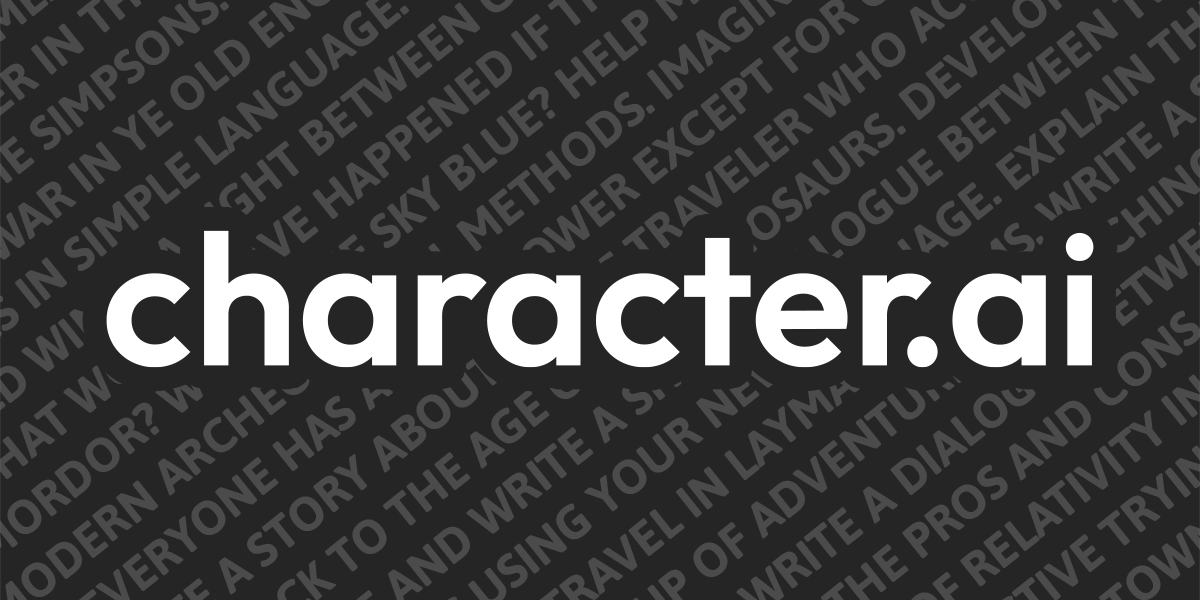Introduction
Artificial Intelligence (AI) has made significant strides over the past few decades, transforming various sectors and becoming an integral part of daily life. One of the most fascinating advancements in this realm is Character AI, a specialized branch of AI focused on creating lifelike, interactive digital entities capable of simulating human-like behaviors and interactions. This article delves into the evolution, applications, and implications of Character AI, highlighting its transformative potential and the challenges it presents.
Evolution of Character AI
Character AI has evolved from simple scripted interactions to sophisticated systems capable of understanding and responding to complex human emotions and contexts. Early AI characters were often limited to text-based chatbots with predefined responses, unable to comprehend nuances or context in conversations. However, with advancements in natural language processing (NLP), machine learning, and neural networks, modern Character AI systems have become more intuitive and responsive.
The development of AI models like OpenAI’s GPT-3 and GPT-4 has been a game-changer. These models can generate human-like text based on vast amounts of data, enabling characters to engage in more meaningful and contextually appropriate interactions. Moreover, advancements in computer vision and speech recognition have further enhanced the ability of AI characters to interact in a multimodal manner, combining text, speech, and visual cues.
Applications of Character AI
Character AI has found applications across various industries, revolutionizing how we interact with digital systems. Some notable applications include:
- Customer Service: AI characters are increasingly used in customer service to handle inquiries, provide support, and resolve issues. These AI agents can operate 24/7, offering consistent and efficient service, and freeing human agents to handle more complex tasks.
- Entertainment: In the gaming and film industries, Character AI is used to create more immersive and interactive experiences. AI-driven characters can adapt to player actions, making games more dynamic and engaging.
- Education: Educational platforms are leveraging Character AI to create personalized learning experiences. AI tutors can provide tailored feedback, help students with their queries, and adapt teaching methods to suit individual learning styles.
- Healthcare: Virtual health assistants powered by Character AI can offer preliminary medical advice, monitor patient health, and provide reminders for medication or appointments, enhancing patient care and accessibility.
- Social Companionship: Character AI is also used to create virtual companions for individuals seeking social interaction. These AI companions can engage in conversations, offer emotional support, and even help combat loneliness.
Implications and Challenges
While the potential of Character AI is vast, it also brings several implications and challenges that need to be addressed.
- Ethical Considerations: The creation of lifelike AI characters raises ethical questions about the nature of interactions and the potential for deception. It is crucial to ensure that users are aware they are interacting with AI and not human beings.
- Privacy Concerns: AI characters often require access to personal data to provide personalized interactions. Safeguarding this data and ensuring user privacy is a significant concern that needs stringent regulations and robust security measures.
- Bias and Fairness: AI systems can inadvertently perpetuate biases present in their training data. Ensuring that Character AI operates fairly and does not discriminate against any group is essential for its responsible deployment.
- Dependence and Social Impact: There is a risk of over-reliance on AI characters for social interaction, which could impact human relationships and social skills. Balancing the use of AI with real human connections is crucial.
The Future of Character AI
 The future of Character AI looks promising, with continuous advancements expected to make these digital entities even more lifelike and capable. Integrating AI characters with augmented reality (AR) and virtual reality (VR) technologies could create even more immersive and interactive experiences. Additionally, improvements in emotional intelligence and context-awareness will enable AI characters to understand and respond to human emotions more effectively.
The future of Character AI looks promising, with continuous advancements expected to make these digital entities even more lifelike and capable. Integrating AI characters with augmented reality (AR) and virtual reality (VR) technologies could create even more immersive and interactive experiences. Additionally, improvements in emotional intelligence and context-awareness will enable AI characters to understand and respond to human emotions more effectively.
As Character AI continues to evolve, it is essential to navigate its development with caution, ensuring ethical considerations and societal impacts are carefully managed. With responsible development and deployment, Character AI has the potential to revolutionize how we interact with technology, offering unprecedented levels of personalization and engagement.
Integration with Emerging Technologies
As Character AI advances, its integration with other emerging technologies will further expand its capabilities and applications. Here are some key areas where Character AI is poised to make significant strides:
- Augmented Reality (AR) and Virtual Reality (VR): The combination of Character AI with AR and VR can create highly immersive experiences. For example, virtual characters can guide users through virtual tours, provide real-time assistance in simulated environments, or enhance gaming experiences by creating interactive and responsive non-player characters (NPCs) that can understand and react to the player’s actions.
- Internet of Things (IoT): AI characters can interface with IoT devices to provide a cohesive and intelligent home or workplace environment. Imagine a virtual assistant that not only answers your questions but also controls your smart home devices, schedules your day, and provides updates on your health and fitness by analyzing data from various sensors.
- 5G Technology: The rollout of 5G networks will enable faster and more reliable data transmission, allowing AI characters to operate with reduced latency. This means more seamless interactions and the ability to handle complex tasks in real time, enhancing user experiences across various applications.
Enhancing Personalization and User Experience
One of the most promising aspects of Character AI is its ability to offer highly personalized user experiences. By leveraging vast amounts of data and advanced machine learning algorithms, AI characters can tailor their interactions to meet the specific needs and preferences of each user. This personalization can take various forms:
- Adaptive Learning: In educational settings, AI characters can adapt their teaching methods based on a student’s progress and learning style. They can provide customized feedback, identify areas where the student is struggling, and adjust the curriculum to ensure optimal learning outcomes.
- Personalized Healthcare: Virtual health assistants can monitor patients’ health data, provide personalized advice, and remind them to take their medication or follow their treatment plans. This personalized approach can lead to better health outcomes and increased patient engagement.
- Customer Engagement: Businesses can use AI characters to enhance customer engagement by providing personalized recommendations, addressing individual customer needs, and offering tailored promotions. This can lead to higher customer satisfaction and loyalty.
Addressing Ethical and Social Implications
As Character AI becomes more prevalent, it is essential to address the ethical and social implications of its use. Developers and policymakers must work together to ensure that AI characters are designed and deployed responsibly. Key considerations include:
- Transparency: Users should be informed when they are interacting with an AI character. Clear guidelines and disclosures can help prevent misunderstandings and ensure that users are aware of the nature of their interactions.
- Data Privacy: Robust data protection measures must be implemented to safeguard user data. This includes ensuring that AI characters only collect and use data that is necessary for their function and that users have control over their data.
- Bias and Fairness: Efforts must be made to minimize biases in AI character behavior. This involves using diverse and representative training data, as well as ongoing monitoring and adjustment of AI systems to ensure they operate fairly.
- Impact on Human Interaction: The increasing use of AI characters should not replace genuine human interaction. It is important to strike a balance between leveraging AI for convenience and maintaining meaningful human relationships.
The Road Ahead
The future of Character AI is filled with possibilities. As technology continues to evolve, AI characters will become more sophisticated, capable, and integrated into various aspects of our lives. Here are some potential future developments:
- Emotional Intelligence: AI characters will develop greater emotional intelligence, allowing them to better understand and respond to human emotions. This can lead to more empathetic and effective interactions in customer service, healthcare, and social companionship.
- Cross-Platform Integration: AI characters will operate seamlessly across multiple platforms and devices, providing a consistent and unified user experience. This will enable users to interact with AI characters in various contexts, whether at home, work, or on the go.
- Collaborative AI: Future AI characters may work collaboratively with humans, enhancing productivity and creativity. For example, AI characters could assist in brainstorming sessions, offer insights and suggestions, and help manage complex projects.
conclusion
Character AI is set to revolutionize the way we interact with technology, offering personalized, responsive, and intelligent digital companions. By addressing the challenges and ethical considerations, we can harness the full potential of Character AI, creating a future where digital and human interactions are seamlessly integrated and enriched.
You Many Also Read: Wordle Hint Today


